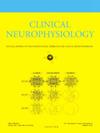Sleep EEG in chronic insomnia disorder
IF 3.7
3区 医学
Q1 CLINICAL NEUROLOGY
引用次数: 0
Abstract
Chronic insomnia disorder is among the most prevalent sleep disorders, and decades of research investigated about its diagnosis and treatment. Yet, the pathophysiological mechanisms underlying insomnia symptoms remain only partially understood. Contemporary conceptual frameworks characterize insomnia as a 24-hour disorder, marked by persistent physiological, cognitive, and emotional hyperarousal, resulting in distinct insomnia phenotypes. However, objective sleep assessment through traditional polysomnography provided limited insight into the mechanisms underlying insomnia disorder. In contrast, the application of advanced analytical techniques to both sleep and wake EEG recordings holds promise for this purpose, with quantitative EEG metrics and sleep microstructure features increasingly recognized as potential biomarkers of insomnia pathophysiology and symptom expression. On the centenary of the first EEG recordings, this narrative review aims to frame and summarize current evidence on EEG applications in insomnia research within the context of modern clinical models. After reviewing contributions from EEG studies conducted during both wakefulness and sleep in characterizing hyperarousal, sleep instability, and sleep misperception, recent findings on EEG-based markers of insomnia treatment response are presented. Finally, directions for future EEG research on insomnia are proposed, building on past achievements and advancing toward precision treatment and clinical translation.
慢性失眠症的睡眠脑电图
慢性失眠症是最普遍的睡眠障碍之一,几十年的研究调查了它的诊断和治疗。然而,失眠症状的病理生理机制仍然只是部分被理解。当代概念框架将失眠描述为一种24小时的疾病,其特征是持续的生理、认知和情绪亢奋,导致不同的失眠表型。然而,通过传统的多导睡眠图进行客观的睡眠评估对失眠症的潜在机制提供了有限的见解。相比之下,先进的分析技术在睡眠和清醒脑电图记录中的应用有望实现这一目的,定量脑电图指标和睡眠微观结构特征越来越被认为是失眠病理生理和症状表达的潜在生物标志物。在第一次脑电图记录百年之际,本文旨在框架和总结在现代临床模型背景下脑电图在失眠研究中的应用的现有证据。在回顾了在清醒和睡眠期间进行的脑电图研究对过度觉醒、睡眠不稳定和睡眠误解的特征的贡献之后,本文介绍了基于脑电图的失眠治疗反应标志物的最新发现。最后,提出了今后失眠脑电图研究的方向,在总结已有成果的基础上,朝着精准治疗和临床转化的方向发展。
本文章由计算机程序翻译,如有差异,请以英文原文为准。
求助全文
约1分钟内获得全文
求助全文
来源期刊

Clinical Neurophysiology
医学-临床神经学
CiteScore
8.70
自引率
6.40%
发文量
932
审稿时长
59 days
期刊介绍:
As of January 1999, The journal Electroencephalography and Clinical Neurophysiology, and its two sections Electromyography and Motor Control and Evoked Potentials have amalgamated to become this journal - Clinical Neurophysiology.
Clinical Neurophysiology is the official journal of the International Federation of Clinical Neurophysiology, the Brazilian Society of Clinical Neurophysiology, the Czech Society of Clinical Neurophysiology, the Italian Clinical Neurophysiology Society and the International Society of Intraoperative Neurophysiology.The journal is dedicated to fostering research and disseminating information on all aspects of both normal and abnormal functioning of the nervous system. The key aim of the publication is to disseminate scholarly reports on the pathophysiology underlying diseases of the central and peripheral nervous system of human patients. Clinical trials that use neurophysiological measures to document change are encouraged, as are manuscripts reporting data on integrated neuroimaging of central nervous function including, but not limited to, functional MRI, MEG, EEG, PET and other neuroimaging modalities.
 求助内容:
求助内容: 应助结果提醒方式:
应助结果提醒方式:


